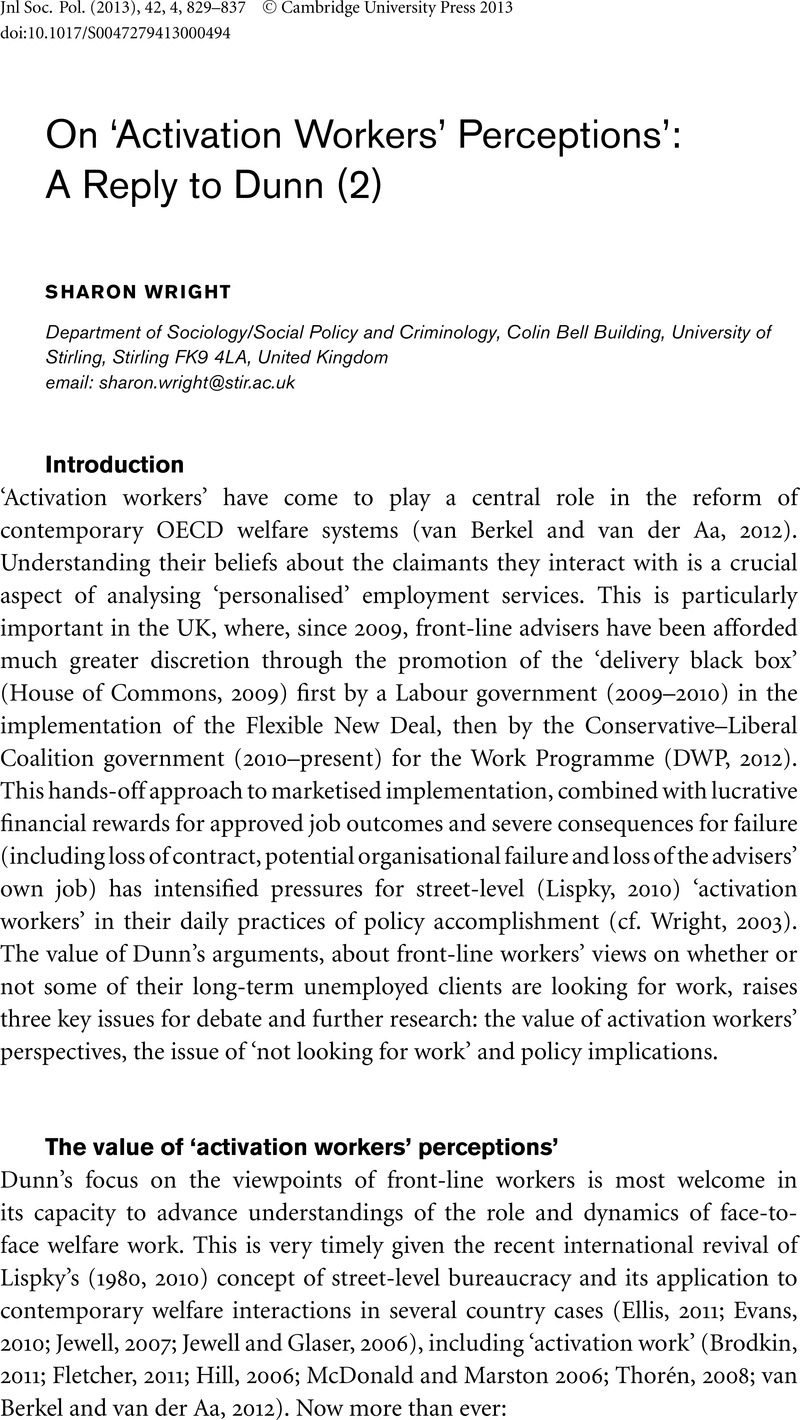Crossref Citations
This article has been cited by the following publications. This list is generated based on data provided by Crossref.
Leibetseder, Bettina
2015.
Activation in the Austrian Social Assistance Scheme – Unproductive Pressure and Low Support.
Social Policy & Administration,
Vol. 49,
Issue. 5,
p.
549.
Nothdurfter, Urban
2016.
The street-level delivery of activation policies: constraints and possibilities for a practice of citizenship.
European Journal of Social Work,
Vol. 19,
Issue. 3-4,
p.
420.
Coletto, Diego
and
Guglielmi, Simona
2018.
Activation policies in action.
International Journal of Sociology and Social Policy,
Vol. 38,
Issue. 3/4,
p.
329.
Nothdurfter, Urban
and
Hermans, Koen
2018.
Meeting (or not) at the street level? A literature review on street‐level research in public management, social policy and social work.
International Journal of Social Welfare,
Vol. 27,
Issue. 3,
p.
294.
Kampen, Thomas
and
Tonkens, Evelien
2019.
A personalised approach in activation. Workfare volunteers’ experiences with activation practitioners.
European Journal of Social Work,
Vol. 22,
Issue. 6,
p.
1038.
Ohls, Carolina
2020.
Dignity‐based practices in Norwegian activation work.
International Journal of Social Welfare,
Vol. 29,
Issue. 2,
p.
168.
Hora, Ondřej
and
Sirovátka, Tomáš
2020.
Why targeting matters: The apprenticeship program for youth in the Czech Republic.
Social Policy & Administration,
Vol. 54,
Issue. 7,
p.
1198.
Hansen, Helle Cathrine
2020.
From Problems to Barriers: A Bottom-Up Perspective on the Institutional Framing of a Labour Activation Programme.
Social Policy and Society,
Vol. 19,
Issue. 1,
p.
75.
Sirovátka, Tomáš
and
Rákoczyová, Miroslava
2022.
Front-line work in activation and targeting of re-qualification programmes: lessons from the Czech Republic.
European Journal of Social Work,
Vol. 25,
Issue. 1,
p.
162.
Leonard, Madeleine
and
Kelly, Grace
2022.
Constructing the “good” mother: pride and shame in lone mothers' narratives of motherhood.
International Journal of Sociology and Social Policy,
Vol. 42,
Issue. 9/10,
p.
852.
Røysum, Anita
2023.
Resourceful female immigrants’ experiences of the Norwegian activation field.
Nordic Social Work Research,
Vol. 13,
Issue. 3,
p.
393.


